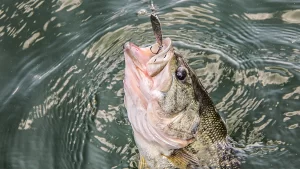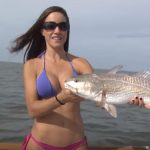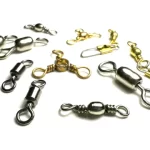Winter fishing demands a strategic approach, with colder waters making fish more sluggish and less likely to chase fast-moving lures. For anglers looking to keep their lines tight during the chilly months, slower presentations and subtle jigging motions can be game-changing techniques. Here’s how to perfect this approach and bring home impressive catches all winter long.
Why Slower Presentations Matter
Fish are cold-blooded creatures, meaning their metabolism slows down as water temperatures drop. This reduced activity makes them less aggressive and less inclined to pursue prey actively. In these conditions, fast retrieves or erratic motions can spook fish rather than entice them.
Slower presentations mirror the natural movements of prey in winter, such as baitfish or insects, which also move more lethargically. Mimicking this behavior increases the likelihood of a strike. Subtle jigging motions, in particular, create a lifelike action that fish find irresistible when they’re feeding conservatively.

Choosing the Right Jig for Winter
Not all jigs are created equal, and selecting the right one for winter fishing is crucial. Opt for smaller jigs, as these are more suited to the slow and subtle movements needed in cold water. Here are a few options to consider:
- Soft Plastic Jigs: These versatile lures are excellent for mimicking baitfish or crustaceans. Pair them with lightweight jig heads for maximum control.
- Blade Baits: Ideal for vertical jigging, blade baits provide subtle vibrations that attract fish without excessive motion.
- Hair Jigs: Known for their delicate and natural movement, hair jigs are particularly effective in clear, cold waters.
The weight of the jig is another important factor. Heavier jigs sink faster and can help maintain contact with the bottom, but they might lose some of the finesse needed for subtle presentations. Lightweight jigs allow for more precise control, especially in shallow or still water.
Perfecting Subtle Jigging Techniques
Slowing down your jigging technique doesn’t mean sacrificing action; it’s about creating controlled, deliberate movements. Follow these tips to master subtle jigging motions:
- Short, Controlled Lifts: Use your rod to make gentle lifts, raising the jig a few inches off the bottom before letting it fall back naturally. This imitates a struggling baitfish or shrimp.
- Pause Frequently: Allow the jig to rest on the bottom or hover in place between movements. The pause can often trigger strikes as fish approach for an easy meal.
- Use Light Line: Thinner lines reduce water resistance and give you better sensitivity to detect even the faintest nibbles. Fluorocarbon lines are particularly effective for their low visibility and minimal stretch.
- Stay Close to Structure: Fish often congregate near structures such as submerged logs, rocks, or drop-offs in winter. Work your jig slowly around these areas to maximize your chances of success.
Adjusting to Changing Conditions
Winter fishing conditions can vary significantly based on location, water depth, and weather patterns. Adjusting your jigging approach to these factors can make all the difference:
- Clear Water: Use natural colors like brown, green, or silver to avoid spooking fish. Subtle jigging becomes even more important in clear water.
- Cloudy Water: Opt for brighter colors or those with added flash to catch a fish’s attention in low-visibility conditions.
- Deep Water: Heavier jigs are necessary to reach the strike zone effectively. Pair them with slower, more deliberate movements.
- Shallow Water: Stick to lightweight jigs and be mindful of noise or sudden movements that could spook fish.
Target Species for Winter Jigging
Subtle jigging isn’t a one-size-fits-all technique but is highly effective for several popular winter fish species.
- Walleye: These predators are particularly responsive to slow-moving jigs, especially when tipped with live bait.
- Crappie: Known for their schooling behavior, crappie often respond well to small, lightly jigged lures.
- Perch: Similar to crappie, perch are highly receptive to subtle jigging motions, especially in deeper waters.
- Redfish: While typically more active in warmer climates, redfish can be coaxed into biting with slow, deliberate jigging.
Gear Tips for Subtle Winter Jigging
Having the right gear is essential to make the most of your jigging efforts:
- Sensitive Rods: Look for lightweight rods with fast action tips to detect soft bites.
- Quality Reels: Smooth drag systems are crucial for handling subtle strikes and keeping fish on the line.
- Jigging Gloves: Protect your hands from the cold while maintaining enough dexterity to feel bites and control your rod.
Fishing in winter presents unique challenges, but with the right approach, it can also be incredibly rewarding. Mastering slower presentations and subtle jigging motions allows anglers to adapt to cold-water conditions and entice even the most sluggish fish.
The key lies in understanding the behavior of fish during winter and tailoring your techniques accordingly. With patience, precision, and a well-stocked tackle box, you’ll find success no matter how cold the water gets.
Image: Wired2Fish





